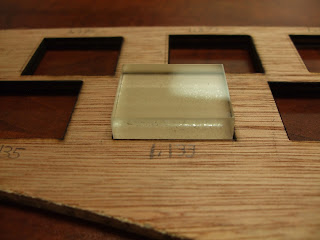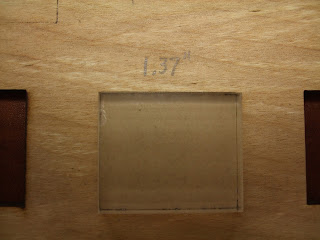Summary of training and meeting notes with
Boss Laser in Sanford, Florida on April 24, 2018
Kevin Lucas and Ken Trenholm were my hosts. I spent most of my time with Ken, who is the Senior Lead Technician at Boss with 27 years of laser experience.
1. We should look at exhaust boxes
https://www.bosslaser.com/expand-filtrabox-fume-extractor.html
(see photo) Even though they are high cost and high maintenance they include filtration, are relatively easy to move (small cabinet sized) on wheels and they'll be very quieter compared to our current exhaust fan.
2. Another way to reduce the noise of the work area is have compressors that are stored outside. A brand mentioned was Ingersoll Rand. You should put a roof or some type of cover over the top of the compressor outdoors to help keep it robust from inclement weather and to keep the sun off of it.
https://www.aircompressorsdirect.com/tools/ingersoll-rand-air-compressors.html?utm_source=bing&utm_medium=cpc&utm_term=ingersoll%20rand&utm_campaign=brand+-+ingersoll+rand&msclkid=368887d5025e11e18d70dd3a5fbda7bf&utm_content=Ingersoll%20Rand
3. Each laser with their own filter box would be especially useful for absorbing fumes from acrylic, leather and wood or when working in high power mode and generating a lot of smoke.
4. Ken also said the only reason we should really be using the 4 inch laser for cutting is for doing foam, otherwise the 2 inch focal length is fine for all cutting and engraving. Either the lasers can be converted into a different focal length; we are not bound to the way they were installed. We probably just wanted it that way when we first received them, as we figured we should have one of each type, but we don't have to stay with it that way. In order to convert between two different focal length we need to find the official Boss Laser toolboxes (see photo). They are black and red and they're going to have accessories that we need not only for conversion but for service going forward. If we need remote technical support on hardware, they will also want to be asking for components in that support box with the Boss Laser technician on the line.
5. In regards to using the rotary tool, there is an additional Y axis controller port on the right back side of the laser. This will be easier to access and is better amenable to lighting for connecting and disconnecting the rotary roller tool than the rear Y-axis port. People with shorter arms or are uneasy reaching around the gantry system may find the side port to be preferable. It is your choice.
6. The direction that you put in the bed support blades is really of no operational consequence. In fact, you can run without any of the blades in there at all because if our compressor and exhaust system are working properly; you'll get good air flow with or without them. The blades are mainly there to support your material and media. The reason why there are so many of them is because Boss Laser understands that there is a variety of shapes and sizes for people's Materials/Media/Substrates; this allows you to customize the support and drop down openings on a job by job basis.
7. Because we can move all the bars if we want to, this allows us to use the 4 inch focal length laser for the rotary tool. That's because the rotary roller tool has been designed in conjunction with the bed to be supported by the bladeless bottom of the bed in a flat manner. In fact, there should have been an option for us upon purchase of the laser to have two low support bars put in to the bottom of the bed (see photo) expressly for this purpose of holding a rotary roller tool with all the blades removed so that the length of the cone of the 4 inch focal length head does not preclude us from using such tool. I have taken a picture of what these bars look like. If you don't want to remove and replace bars, you may be able to get away with simply inverting the L-shaped bracket holding the wheels to be upside down to make more vertical space for the nose cone.
8. When working with wine glasses on the rotary roller tool, the two main problems that we've experienced are (a) that flat base of the glass falls off the support wheels and (b) designs are large in the vertical direction not been fully etched as the laser goes out of focus after large curvatures at the bottom of the cup. A suggestion for keeping the glass from falling off the wheels is to spread the two rubber band of rings just a little bit and wedge that in that part of the base in between they'll rings so that it doesn't slip off. With regards to being out of auto-focus, instead of auto-focusing on the highest point of the curvature of the cup, choose a point that would be in the midway section of your design. Yes, this is a compromise of some precision, but we still get the whole design down and depending on the curvature, it may still look very nice.
9. We want to make sure that we're always doing auto-focus so that the tip of the head is pointing down nearly perpendicular to the surface of the substrate. We want to avoid having to make contact with the substrate at an angle with the cone because that can torque or bang or take out of alignment the optics and mirrors on the laser head. This is something one also keeps in mind when regarding the wine glasses; actually do your auto-focus at the crest or highest point of the curvature of the cup, and then use the X direction control to purposely move it a little bit off the auto-focus towards the bottom of the design.
10. As regards to the computer communicating directly with the laser, a Boss Laser thumb drive was given to us when we purchased the machines; it should have all the drivers we need for the USB Port. I did inform Ken that we did find the third party drivers with an Internet search, but in the absence of that, one can install from the thumb drive to make sure we did we have a base system that is complete.
11. Lubrication: white lithium grease squirted anywhere you can see metal on the rail of the gantry, and also a few spots on the belt, help to keep everything running smoothly. It's also fine to squirt some of the white lithium grease on the tooth side of the belt. After doing so make sure you traverse in the X and Y directions using the on-board controls to make sure the grease is evenly distributed.
12. Our original idea of retrofitting permanently the 4 inch laser to become a metal cutting laser with an oxygen source is not practically feasible according to the Boss Laser technical in-house team. I've taken some pictures to show the specialized parts and blades that are used in their HP line of machines which are specifically engineered for metal cutting and metal cutting only. The claim from Boss is that the optics and mirrors, as well as the head size and shape, while in principle could be made to work with an oxygen source at the right focus distance for cutting metal, that the quality of the work will be degraded and that we will have frequent breakdowns and be spending lots of money on replacement optics and accessories. Additionally if we do buy an HP machine Ken essentially insisted that we bring in Mr. Mike Stone from Boss lasers for in house training as there are enough significant differences between operating a metal cutting machine vs. our current lasers that we would need proper instruction to get started.
13. We should use double layers of tape when testing the beam spots on the mirrors for doing a beam alignment. After every adjustment, take the gantry all the way forward, test a pulse, and then all the way backwards, and test a pulse. After alignment, use the alcohol treated towel wipes to remove tape residue. It is best to use your pinky finger and make sure the fingernail is trim. Too much force can put the beam back out of alignment, and a finger nail can scratch a mirror.
14. Feel the laser head and nose cone to make sure it is cool to the touch. If the beam is out of alignment, the head and cone will be at least very warm.
15. Use cast acrylic rectangular blocks, elevated on a roll of tape, to pulse the laser after alignment to help make sure that the beam is straight down. I brought a few back with me from Boss and will give one to Seth. Beam alignment is even more critical on the HP class of lasers that do metal cutting, as the opening in the nose cone is even smaller.
16. Never alter the autofocus ring on the nose cone. If it is accidently adjusted, you will have to manually check the focus distance by changing the Z position incrementally, pulsing the laser, and checking for beam quality.
17. Ken claims that for an ordinary day of usage, the lens should be cleaned twice.
18. The honeycomb support beds can be cleaned by soaking them in hot water with Dawn dish washing soap.
19. The lasers are cw (continuous wave) lasers. As such, even though the RDWorks allows you to set a laser frequency in the layer parameters advanced settings dialog, it in fact has no effect. The default value of 20 kHz is set by Boss Laser simply as a placeholder value; no matter what number we type in there, the net result is the laser runs cw all the same. The field is there to populate in the dialog box because Boss outsources the development of RDWorks to a third party that reuses software components for different laser manufacturers, some of which do actually have lasers with rep rates.






































